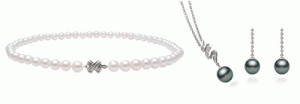
Pearls
Pearl cultivation in Moorea Island can be traced back to the late 20th century when the first pearl farms were established in the region. Drawing from the ancient knowledge and techniques of their Polynesian ancestors, the locals began farming the Pinctada margaritifera, a species of black-lipped oyster endemic to the region, known for producing the highly prized Tahitian black pearls. Over the years, the pearl industry has grown exponentially, with Moorea now boasting numerous pearl farms that cater to both local and international markets.
The Cultivation Process
The cultivation of Tahitian black pearls is a meticulous and time-consuming process, taking anywhere between 18 months to 2 years. To ensure the finest quality, pearl farmers adhere to strict practices, including the careful selection of oysters, the gentle grafting process, and constant monitoring of water conditions.
Once the oysters reach maturity, they are implanted with a small nucleus, typically made from the shell of a freshwater mussel. The oyster is then returned to the water, where it secretes layers of nacre around the nucleus to form the pearl. This natural process results in the unique range of colors, shapes, and lustrous finishes that characterize Tahitian black pearls.
Economic Impact
The pearl industry has become a significant contributor to the local economy of Moorea Island. It provides employment opportunities for the islanders, particularly in pearl farming, jewelry production, and the burgeoning tourism sector. In addition, the export of these high-quality pearls generates substantial revenue, with Tahitian black pearls now being considered one of the most valuable and sought-after varieties in the world.
Environmental Initiatives
Recognizing the importance of preserving their pristine environment, the pearl farmers of Moorea Island are committed to sustainable practices. They work closely with marine biologists and conservationists to monitor the health of the oyster populations and implement measures to minimize the impact of pearl farming on the surrounding ecosystem. These efforts include regular water quality assessments, rotation of farming areas, and the use of eco-friendly materials in farm constructions.
Pearl Tourism
The allure of Tahitian black pearls has also given rise to a thriving pearl tourism industry on Moorea Island. Visitors flock to the island to experience the magic of pearl cultivation first-hand, with guided farm tours offering a glimpse into the complex process of nurturing these exquisite gems. Additionally, pearl-themed boutiques, galleries, and workshops provide opportunities for tourists to purchase authentic and ethically sourced pearl jewelry, fostering a deeper appreciation for the craftsmanship and heritage of the industry.
The pearl industry of Moorea Island is a shining example of cultural heritage, sustainability, and economic growth working in harmony. As the world continues to recognize and cherish the unique beauty of Tahitian black pearls, Moorea Island remains committed to preserving its rich traditions and the delicate balance of its natural environment.
Moorea has the largest selection of Tahitian pearl boutiques!
 The Black Pearl Gem Company
The Black Pearl Gem Company
BP 1087, Papetoai, Moorea
French Polynesia
Tel: 689/56-36-68
Fax: 689/56-13-48
https://www.thepearlsource.com/black-pearls.php
Moorea’s largest selection of Tahitian Black Pearl jewelry.
Open daily from 9 AM to 6 PM. Located across from Club Med. Call for courtesy shuttle 56-36-68
Heivai Black Pearls
BP 583, Maharepa, Moorea
French Polynesia
Tel/Fax: 56-41-55
Call for free transportation
 Moorea Black Pearls
Moorea Black Pearls
BP 583, Maharepa, Moorea
French Polynesia
Tel/Fax: 689/56-23-63
Call for free transportation
Herman Perles
In front of Club Med
Tel/Fax: 689/56-42-79

Ocean Pearl Gallery
Tahitian Black Pearls and Polynesian art
Located in Cook’s Bay, inside the “Te Honu Iti” restaurant.
Tel: 689/56-31-93
Contact: Anne Simon
Email: an*******@**il.pf

